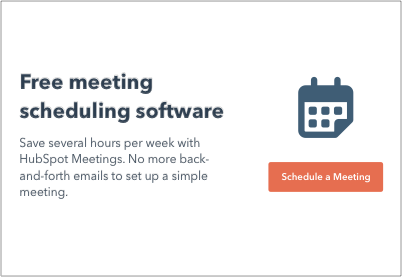If you’re like me, you’ve realized that it’s hard to sign new clients and users. You spend time, money, and a lot of energy on the client onboarding process, so you really can’t afford to lose them. Because you don’t want to get off on the wrong foot with them, it’s especially important to follow an effective onboarding process.

From hunting new clients to on-boarding them, agencies need to be mindful of many factors and formulate their strategies around understanding client expectations and needs, goal setting, on-time delivery, and retainer pricing. According to the Marketing Agency Growth Report 2018, a major 43% of agency businesses don't have the free time to focus on administrative work which includes client onboarding,15% of agencies neither customize their service offering nor deliver services on time, acquiring new clients has been one of the big pain points for almost 60% of the agencies and 16% of them face client retention problems.
Adapting to the client’s pricing preference is another layer of complexity demanded by clients that an agency owner must deal with in today’s market. While 79% of agency owners are confident about closing new deals and clients, 23% of them fail to meet client goals and expectations. In order to drive clients to your agency, considering to offer incentives in the form of discounts, bonus work, faster turnarounds have worked out well for agencies.
Onboarding is the process of familiarizing a new client with the company's products or services. Effective client onboarding teaches all of the uses and benefits of your offerings. It is important to set needs and expectations in the beginning of the relationship that will be useful when handling future conflicts. Also, the easier time a client has understanding and properly utilitzing the good at its fullest potential, the more value they'll get out of the purchase -- improving customer satisfaction, the likelihood of retention, and the possibility of a referral.
Set up client meetings without the annoying email back-and-forth. Get free acces to HubSpot Meetings here.
Failing to properly onboard new clients and users has consequences that can ripple through the life of the engagement. Without the proper plan in place, execution becomes misguided, and the campaign has no direction. A campaign without clear direction and complete buy-in on both sides doesn’t stand much of a chance. I’m sure you have experienced this in the past. I know I have, and it wasn’t fun.
After a few costly lessons I learned during client onboarding, I spent some time creating detailed processes my team -- at Revenue River Marketing -- now follows closely with every new client. This repeatable process has changed our campaign fortunes.
Steps to deliver an effective client onboarding process
1) Assess the Client’s Campaign and Assets
One of the most critical parts of your client onboarding process is assessing the existing campaigns of your new client. Understanding what they do and don’t have in place should be used to develop a scope of work. The more prospects you work with, the more you’ll realize that every client is different; knowing the type of client you work with will allow you to effectively interact with them. Each one is at a different point in their maturity continuum, and they each have a wide range of assets to work with (or around).
- Make sure you have all of the access necessary to review their assets.
- Make a list of everything you find, both positive and negative, and remember to position the negatives as opportunities for improvement.
- When you review your findings, look for opportunities to position yourself as an expert.
2) Build Your Marketing Plan and Campaign Goals
A successful campaign starts with a goal and a plan. During the sales cycle, you should have identified what the client is hoping to accomplish. The assessment uncovered what they have to work with and what gaps you need to fill. Now, the goal is to move things forward.
This critical onboarding step involves taking the assessment and turning it into quantifiable campaign goals with a plan your team can execute. The better you clarify the purpose of the campaign with your team and the client’s team, the more likely you’ll stay aligned throughout.
Make sure:
- The scope of work fits your skill sets. Don’t get yourself into something you can’t deliver on.
- You have an accurate enough data set to establish the necessary baseline for the goals.
- You build the goals together. They’re worthless without buy-in on both sides.
3) Assign Your Best Team for the Job
With a firm understanding of what you’re up against and how you plan to achieve the established goals, the next step is assigning a team.
At Revenue River Marketing, we assign teams of five to every new client. The team consists of a strategist, a coordinator, a search analyst, a designer, and a project Manager. The better our team can relate to our client’s team, the smoother the onboarding process will go.
But the most important assignee from an onboarding perspective is the strategist. As the chief point of contact, it’s important that the strategist has some commonalities with the client -- if possible. I try to assign the team with the most relevant industry experience and cultural fit first; everything else second. If I’m confident that they’ll hit it off on a personal note, I’m confident that the onboarding process will go smoothly.
4) Hold an Internal Client Orientation Meeting
Before your team is involved with the new client, you need to brief them on everything that has happened so far. This meeting is strictly to educate your team on the client, his industry, his products or services, and the scope of work. The team needs to have a thorough understanding of the client's goals, and you should prompt them to do a certain amount of prep work for the kickoff call.
You should:
- Pool together the assessment, contract, and sales meeting notes as a primary handover packet.
- Assign specific premium content and blog articles to be read.
- Brief your team on everyone on the client’s team -- provide LinkedIn profiles and meeting notes.
5) Plan for a Great Kickoff Call
This is the big first impression. It's the moment your team and the client’s team has been waiting for: the kickoff meeting.
It’s important for your team to come across as experts. You don’t want the client to think you (the owner or business development person) are the only one that knows anything. You team needs to demonstrate their understanding of the job at hand, command their portion of the call, and gather the information they need to move the campaign forward.
Here's a sample agenda:
- Introduction: 10 minutes
- Campaign Objectives: 10 minutes
- Client Overview: 20 minutes
- Campaign Overview: 10 minutes
- Expectation: 5 minutes
- Next Steps: 5 minutes
6) Do a 30-Day Checkup Call
This call is designed to be a one-on-one call between myself and the primary decision maker -- I want to talk to the person cutting the checks. Schedule this call to gather feedback on the engagement and relationship so far. It's the perfect time to fix it if there is an issue.
I also use the call as an opportunity to strengthen our relationship, extend an invitation to the client to contact me directly with anything of concern, and cement our agency's commitment to delivering results. Basically, I want the client to know that I care how the agency is doing, if they are happy with the work, and what else they need in a relationship. This is an effective method to reduce churn rate.
Be sure to:
- Have questions you want answered prepared before the call.
- Recap all activity and production during the first 30 days.
- Leave the call with the client understanding how much you value your relationship and his business.
When Onboarding Is Complete
When I get done with the checkup call, I usually circle back with the strategist to pass on any notes that came up to make sure we’re all on the same page. If things are great, I’m giving them a high five. If there are issues, the strategist sets a meeting to make corrections.
Once I’ve addressed these six elements, I consider clients are onboarded. It’s now time for the team to execute on the campaign, hit the goal, and extend the relationship.
Client Onboarding
![→ Download Now: 8 Free Customer Onboarding Templates [Free Kit]](https://no-cache.hubspot.com/cta/default/53/b6abbd56-b7d5-42bf-8a85-b7ae63ca70d2.png)

